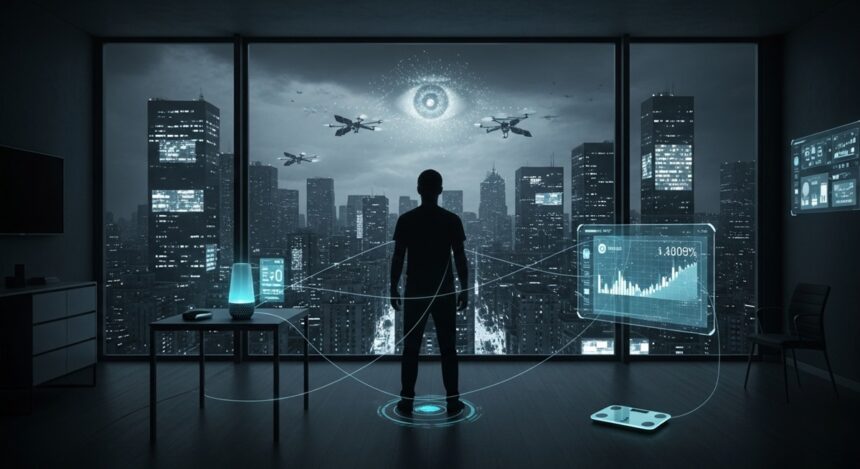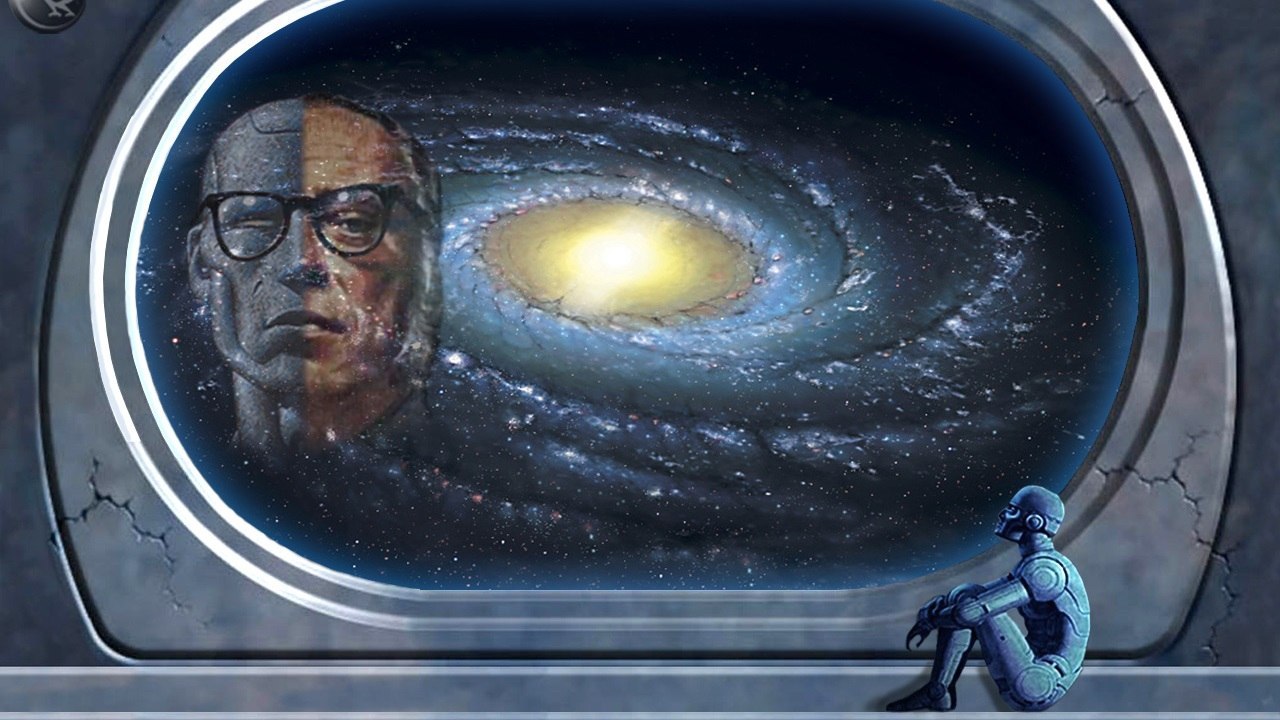It begins with an offer you can’t refuse: convenience. They give us voice assistants to manage our homes, smart scales to manage our bodies, and digital wallets to manage our money. But beneath the slick interface of this promised digital future lies a profound shift—a creeping erosion of the most basic human right: autonomy. We are not just adopting new tools; we are integrating ourselves into a vast, omnipresent surveillance apparatus designed for control. The line between being a user of technology and being a product of technology has vanished.
The narrative of progress has concealed a more ancient, more unsettling agenda, one that seeks to manage every resource, every movement, and every thought. This isn’t science fiction anymore. The blueprints for the final lockdown are being drawn with code, biometrics, and the very structure of our cities.
The Silent Witnesses: Mapping the Invisible Network
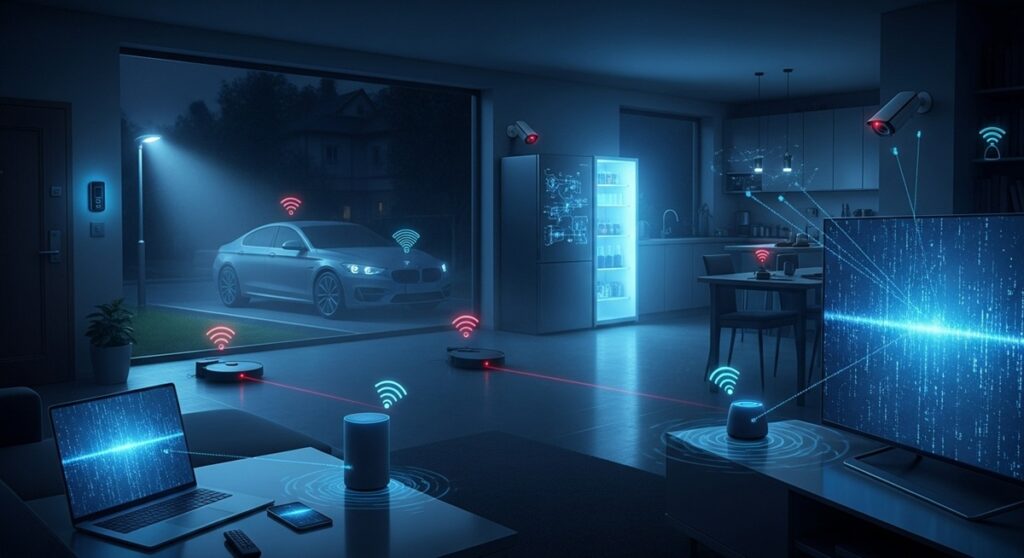
We were told our devices were for communication and entertainment. Now, they form an integrated grid of constant surveillance, turning our homes into sophisticated monitoring zones. This is the Invisible Network of Surveillance, and it operates without interruption.
The Domestic Gridlock
The popular notion that “you’re never alone at home” is alarmingly literal. Every appliance, from the latest television to the simplest kitchen gadget, is designed for wireless connectivity. These aren’t just isolated machines; they are nodes in a massive, private data mesh.
Many common “smart” devices—the kind sitting harmlessly on your countertop or mounted to your door—are equipped with cameras and microphones. They are designed to monitor the environment, perpetually listening and watching, and transmitting that data back to unseen servers.
Consider the neighborhood security phenomenon. Devices like certain Wi-Fi security cameras create mandatory mesh networks. This hidden infrastructure allows data from every interconnected appliance and device within range to be collected and channeled externally. Your phone, your laptop, and your energy meter are all tracked, their data aggregated and sent into the cloud—a permanent digital record of your private existence, time-stamped and mapped.
The vehicle you use for freedom is now an instrument of constant tracking. Modern cars are connected to the internet for everything from maintenance alerts to navigation. As your vehicle moves, its location and driving habits are constantly tracked. Furthermore, when it passes under automated infrastructure, such as certain smart streetlights, these systems act as advanced data harvesters, collecting information not only from the car’s telemetry but also from the personal devices carried inside, instantly forwarding that data to a centralized cloud. The entire tapestry of your daily life is thus digitized, cross-referenced, and stored.
Beyond the threat to privacy, the dense saturation of this technological environment raises serious concerns about the constant exposure to electromagnetic radiation (EMR) for those who fear its long-term biological effects. The physical safety of the body is compromised by the relentless need for connectivity.
This integrated digital system is not just about observation; it’s about establishing the digital parameters necessary for total life control.
The Fifteen-Minute Cage: Architecture of Control
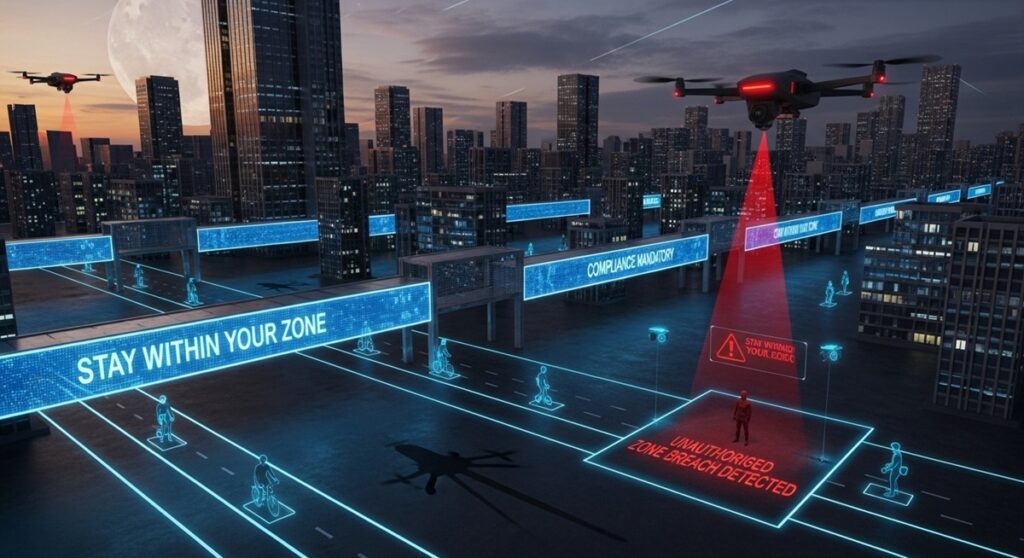
The ultimate ambition of this pervasive technological infrastructure, according to its sharpest critics, culminates in the “Smart 15-Minute City.” Proponents present this model as a utopian solution for sustainability and convenient living, where every necessity is reachable within a 15-minute walk or bike ride.
Critics, however, view the digital overlay of this urban vision as a sophisticated mechanism for absolute control and containment.
The Boundaries of Autonomy
The most chilling aspect of the Smart City concept is Geofencing: the deployment of virtual boundaries that define the spatial limits of an individual’s movement. These digital walls will be enforced through advanced biometrics, making unauthorized passage impossible. Your freedom of movement—the essence of independent life—would become contingent on digital permission.
This control over physical space is intrinsically linked to Digital Financial Control. The emerging structure of Central Bank Digital Currencies (CBDCs) or similar digital money systems would give authorities the unprecedented power to enforce compliance. A person’s access to their funds could be instantly revoked or “turned off” the moment they violate the geofence boundary or disobey a digital mandate.
The potential for enforcement is equally draconian. Critics envision a future where automated drone surveillance monitors unauthorized movement, deploying loud, mandatory warnings to compel compliance and force citizens back into their designated “stalls.” This model transforms the promise of a convenient urban life into the dystopian reality of a digital prison, representing the societal “death” of personal liberty.
The Forbidden Menu: Re-engineering the Food Supply
A separate, yet symbolically powerful, pillar of future control concerns the food supply—specifically, the normalization of synthetic and recycled consumption. The extreme example of protein synthesis from urban waste serves as a stark warning.
The Recipe from the Sewer
The scientific exploration of synthesizing food from human waste, while initially framed as a solution to Tokyo’s urban waste disposal problems, illustrates the extreme lengths resource recycling may be taken.
- The Unsettling Discovery: Japanese scientist Mitsuyuki Ikeda discovered specific bacteria in sewer sludge capable of processing human excrement into edible protein.
- The Isolation: Through a process of isolation, he purified this protein, adding dyes and flavorings to create an alternative type of artificial meat.
- The Symbol: This synthetic product, colloquially dubbed a “Shit Burger,” boasts a startlingly efficient nutritional profile (63% protein, 25% carbohydrates, 3% fat, and 9% minerals).
To skeptics, this research is not merely a curious scientific digression; it’s a grotesque symbol of the future menu—a mandatory, controlled consumption model within the confines of the resource-optimized “15-Minute City” where access to natural food sources may be restricted or impossible.
The Defeat of Disguise: New Biometric Frontiers
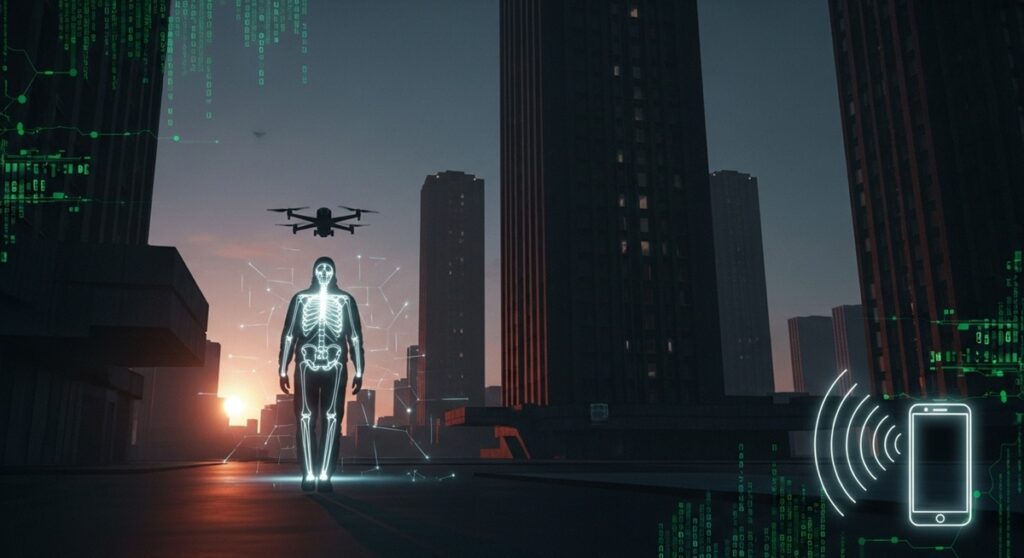
As citizens look for ways to regain anonymity and escape the ubiquitous digital dragnet, surveillance technology is quietly advancing to defeat all forms of disguise. Identification no longer requires a clear face or a fingerprint; it only requires a shadow.
Skeletal Biometrics and Digital Undressing
Recent patented research from institutions like the University of California outlines a non-standard method of identification using a person’s shadow and unique body structure:
- Skeletal Fingerprinting: The system can analyze blurry, low-resolution drone footage—where a person is merely a dark spot—and convert that spot into a silhouette. A specialized mathematical filter is then applied, acting like a digital X-ray to reveal the person’s unique skeletal frame. This framework acts as a new form of biometrics—the imprint of the whole body, unaffected by clothing, posture, or facial obscurity.
- The Digital X-ray: To defeat the concealment offered by clothing, the system employs neural networks to analyze the color image, segmenting out clothing details from the figure underneath. It then generates a hybrid image of the person “cleaned” of his clothes, effectively providing a technology to defeat camouflage and disguise.
This combined method reportedly boosts recognition accuracy significantly (from 44.8% with classic methods to 64.3% with the hybrid approach), confirming that the drive to defeat identity masking is relentless.
Perpetual Mobile Tracking
Finally, the most insidious tracker remains the most personal device: the smartphone. Technology allows these common devices to take images of the user in the infrared range every few seconds, ensuring constant, silent, and near-invisible tracking and data collection, reinforcing the idea that complete privacy has been rendered obsolete.
The Final Question
The technologies are no longer theoretical. The push for centralized control through biometrics, digital money, and geofenced cities is happening now. The ultimate philosophical question is not how these technologies work, but where we draw the line between convenience and coercion. When every movement is tracked, every transaction is logged, and every boundary is enforced by technology, what fundamental quality of the human spirit remains free? The answer lies not in finding the secret key to the prison, but in refusing to enter the cage built of convenience.







